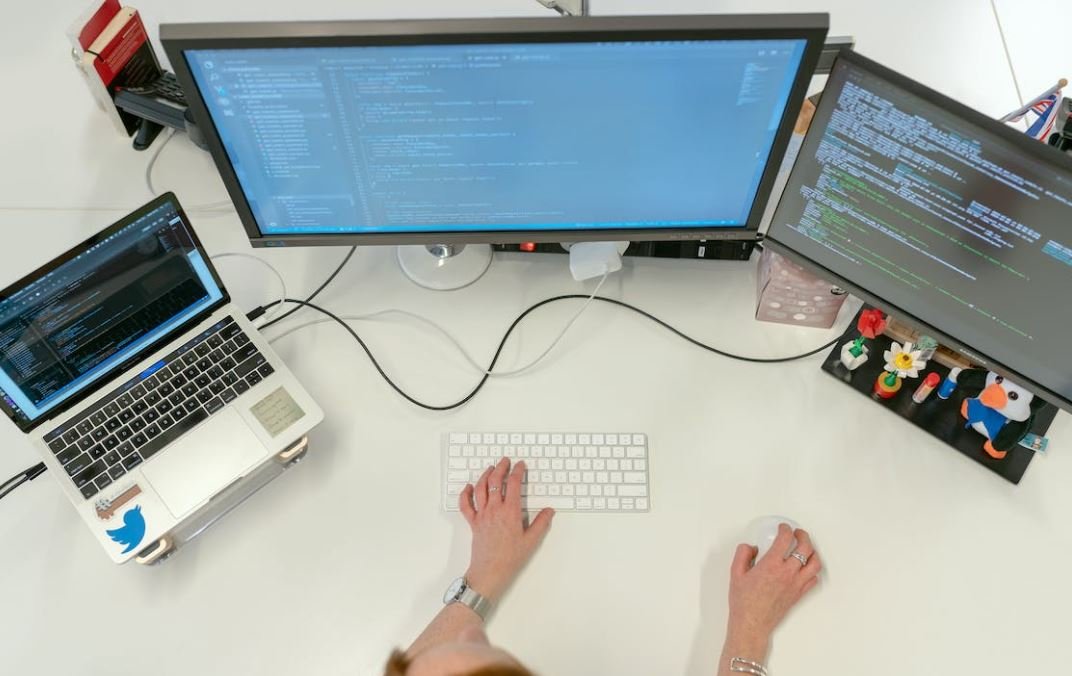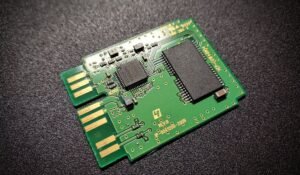How to Make Generative Art with Code
Generative art is a form of art that is created using algorithms and code. It is a fascinating field that allows artists to create unique and ever-changing artworks. In this article, we will explore how you can make generative art using code, even if you have no prior programming experience.
Key Takeaways:
- Generative art is created using code and algorithms.
- You don’t need to have programming experience to make generative art.
- There are several JavaScript libraries and frameworks available to help you create generative art.
Before we dive into the process of making generative art with code, let’s first understand what it is all about. Generative art is a form of art where the artist creates a system or set of rules, and then uses code to generate artwork based on those rules. Each time the code is run, a new artwork is produced.
One interesting aspect of generative art is that it allows for the creation of unique and never-before-seen artwork. The code can incorporate randomness, user input, or even data from external sources, resulting in infinite possibilities. It is an exciting way to explore creativity and push the boundaries of traditional art.
To get started with making generative art, you don’t need to be an expert programmer. There are several JavaScript libraries and frameworks available that make it easier to create generative art using code. Two popular libraries are P5.js and Three.js.
With libraries like P5.js and Three.js, even beginners can start creating generative art with code.
Getting Started with P5.js
P5.js is a JavaScript library that provides a simple and intuitive API for creating art and interactive experiences. It is a great choice for beginners who want to explore generative art. Here are the steps to get started:
- First, include the P5.js library into your HTML file by adding the following script tag:
- Create a canvas element in your HTML file to draw your art:
- In your JavaScript file, write code inside the
setupfunction to set up the canvas and any other initial configurations: - Write code inside the
drawfunction to generate your artwork:
| Script Tag |
|---|
<script src="https://cdnjs.cloudflare.com/ajax/libs/p5.js/1.4.0/p5.js"></script> |
| Canvas Element |
|---|
<canvas id="myCanvas"></canvas> |
| Setup Function |
|---|
function setup() { |
| Draw Function |
|---|
function draw() { |
With just these few lines of code, you can create a simple generative art piece using P5.js. The setup function is called once at the beginning, while the draw function is called repeatedly to produce the artwork. You have access to various functions and variables provided by the P5.js library to manipulate shapes, colors, and more.
Exploring Three.js for 3D Art
If you are interested in creating generative art in 3D, Three.js is an excellent choice. It is a JavaScript library that allows you to create 3D graphics and animations. Here’s how you can get started:
- First, include the Three.js library into your HTML file:
- Create a div element in your HTML file to hold the 3D canvas:
- In your JavaScript file, set up the 3D scene and camera:
- Write code to create 3D objects and animate them:
| Script Tag |
|---|
<script src="https://cdnjs.cloudflare.com/ajax/libs/three.js/110/three.min.js"></script> |
| Canvas Holder |
|---|
<div id="myCanvas"></div> |
| Scene and Camera Setup |
|---|
var scene = new THREE.Scene(); |
| Object Creation and Animation |
|---|
var geometry = new THREE.BoxGeometry(); |
With Three.js, you can create stunning generative art in 3D by manipulating objects and adding animations.
Generative art is a vast field with limitless possibilities. Whether you choose to create 2D or 3D art, there are numerous libraries and frameworks available to assist you. Take some time to experiment, play with different algorithms, and explore your creativity. The results can be truly mesmerizing.

Common Misconceptions
1. Generative Art Requires Advanced Programming Skills
One common misconception about generative art is that it can only be created by highly skilled programmers. However, this is not necessarily true. While having coding knowledge can be helpful, there are user-friendly tools and libraries available that allow artists with little to no programming experience to create stunning generative artworks.
- Generative art software often comes with intuitive user interfaces, making it accessible to beginners.
- Artists can learn coding concepts specific to generative art, such as randomness and patterns, without knowing complex programming languages.
- Online communities and tutorials provide resources and support for artists of all skill levels to learn and create generative art.
2. Generative Art is Only Produced by Algorithms
Another misconception is that generative art is exclusively produced by algorithms and lacks the human touch. While algorithms do play a significant role in generative art, it does not mean that human creativity is absent. Artists often utilize algorithms as tools to explore and express their artistic visions, combining the elements of chance and intention.
- Artists can design or tweak algorithms to create unique generative art that aligns with their artistic style.
- Generative art can be a collaborative process where artists guide and interact with the generative system to shape the final result.
- Artists still make creative decisions regarding color palettes, shapes, compositions, and other aesthetic elements within the generative process.
3. Generative Art is Predictable and Repetitive
Contrary to popular belief, generative art is far from predictable or repetitive. In fact, one of the most exciting aspects of generative art is the element of surprise and the infinite possibilities it offers. Each generative artwork created with code can be unique and challenging to reproduce or recreate by following the same steps.
- Generative art often relies on randomness or interaction, resulting in unpredictable and diverse outcomes.
- Artists can introduce variables and parameters in their code to introduce variations and create dynamic generative art forms.
- With generative art, artists can experiment and explore different possibilities, pushing the boundaries of creativity and innovation.
4. Generative Art is Only for Tech-Savvy Artists
Some people believe that generative art is restricted to tech-savvy artists who have a deep understanding of coding and computer science. However, this notion is incorrect as there are numerous entry points and resources available for artists from various backgrounds to explore generative art.
- Non-programmers can use visual programming environments that simplify the process of creating generative art.
- Artists from traditional art backgrounds can incorporate generative techniques into their workflow, blending traditional and digital art practices.
- Online communities and workshops provide opportunities for artists to learn and collaborate, regardless of their level of technical expertise.
5. Generative Art Lacks Conceptual Depth
Some misconceive generative art as being solely focused on aesthetics and lacking conceptual depth. While there are undoubtedly examples of purely visually appealing generative art, many artists use generative techniques to explore complex themes and ideas, creating thought-provoking artworks.
- Generative art can be a powerful medium for examining topics such as evolution, complexity, emergence, and systems thinking.
- Artists can use generative techniques to visualize data, patterns, and processes, shedding light on scientific or social phenomena.
- Generative art can spark discussions and challenge traditional notions of authorship, creativity, and the role of the artist.

Introduction
Generative art is a fascinating and unique form of art, where artists use code to create images, animations, and even music. This article explores the various points, data, and elements of making generative art with code, showcasing the potential and creativity behind this exciting field.
The Many Faces of Generative Art
Generative art encompasses a wide range of styles and techniques. The following table highlights some popular forms and their defining characteristics:
| Form of Generative Art | Description |
|---|---|
| Fractal Art | Artworks generated by mathematical algorithms that exhibit self-similarity and intricate detail. |
| Algorithmic Sculpture | Physical sculptures created through the precise execution of programmed algorithms. |
| Pixel Art | Digital images composed of individual pixels, often retro-inspired and created programmatically. |
| Data Art | Artworks generated using real-time or stored data, revealing hidden patterns or information. |
| Interactive Art | Artworks that respond to user input or environmental factors, making each experience unique. |
Exploring Generative Art Tools
A variety of tools and programming languages can be used to create generative art. The following table showcases some popular options:
| Tool/Language | Description |
|---|---|
| Processing | A flexible programming language designed for visual arts, making it accessible for beginners. |
| p5.js | A JavaScript library that simplifies generative art creation and allows for easy web integration. |
| Python + Pygame | A versatile combination for creating generative art and interactive experiences. |
| Cinder | A powerful creative coding framework that enables the creation of both 2D and 3D generative art. |
| OpenFrameworks | A C++ toolkit that empowers artists to create interactive and real-time generative art. |
Generative Art Influences
Generative artists draw inspiration from various sources, including the following:
| Influence | Explanation |
|---|---|
| Nature | Recreating natural forms, patterns, and processes in generative art. |
| Mathematics | Utilizing mathematical principles, such as chaos theory, fractals, and algorithms, to generate unique visuals. |
| Computational Thinking | Applying systematic and logical approaches inspired by computer science to create visual compositions. |
| Surrealism | Exploring dream-like and subconscious imagery through generative processes. |
| Emergence | Embracing the unpredictable and emergent properties that arise from complex interactions. |
Generative Art Examples
To further illustrate the range of possibilities in generative art, we present some captivating examples below:
| Example | Description |
|---|---|
| “The Persistence of Chaos” by Guo O Dong | A generative artwork featuring a laptop infected with six of the most destructive malware strains. |
| “Interference Series” by LIA | Visual representations of the movement of subatomic particles, exploring the intersection of art and physics. |
| “Code Swarm” by Michael Ogawa | An animated visualization of the evolution of software projects using generative techniques. |
| “Wind Drawing” by Random International | A sculpture consisting of responsive lights that mimic wind movements in real-time. |
| “Onformative” by Refik Anadol | Using data and AI algorithms, this installation generates abstract visuals based on real-time weather conditions. |
Challenges in Generative Art
The process of creating generative art can present several challenges for artists, as shown below:
| Challenge | Explanation |
|---|---|
| Technical Limitations | Dealing with hardware or software constraints that affect the complexity or execution of the artwork. |
| Algorithm Design | Developing and refining algorithms to produce aesthetically pleasing and unique generative outcomes. |
| Computational Efficiency | Optimizing algorithms to generate art in real-time or handle vast amounts of data effectively. |
| Conceptual Exploration | Finding original concepts and pushing boundaries to ensure innovative generative art creation. |
| Digital Preservation | Addressing challenges related to preserving and archiving digital generative artworks for future appreciation. |
The Future of Generative Art
Generative art continues to evolve and flourish, driven by advancements in technology and the growing interest of artists. The potential for creating unique, dynamic, and interactive art experiences seems boundless. By blending code, creativity, and imagination, generative art opens doors to new dimensions of artistic expression.
Conclusion
Generative art combines the power of coding and artistic sensibilities to create mesmerizing and thought-provoking artworks. From fractals to data art, the vast array of generative art forms showcases its ability to inspire and captivate. As technology advances and coding becomes more accessible, we can expect the generative art movement to continue pushing boundaries, fostering innovation, and leaving us in awe of its endless possibilities.
Frequently Asked Questions
What is generative art?
Generative art refers to any form of artwork that is created with the help of an autonomous system, such as an algorithm or a computer program. It is characterized by the use of rules, randomness, and algorithms to produce unique and unpredictable visuals, sounds, or other creative outputs.
Why should I learn to make generative art with code?
Learning to make generative art with code offers a unique blend of artistic expression and programming skills. It allows you to create visually appealing and interactive artworks by leveraging the power of code and algorithms. It can be a rewarding and creative way to explore your artistic vision, experiment with concepts, and challenge yourself creatively and technically.
What coding languages can I use to create generative art?
There are several coding languages you can use to create generative art, including but not limited to:
- Processing, a popular language built for visual arts and creative coding.
- JavaScript, which offers a wide range of libraries and frameworks like p5.js and Three.js.
- Python, with libraries such as Pygame, Turtle, and OpenCV.
- GLSL (OpenGL Shading Language), commonly used for creating generative 3D graphics.
What are some resources to learn generative art with code?
There are various online resources available to learn generative art with code. Some popular platforms include:
- Online tutorials and courses on websites like Codecademy, Khan Academy, and Udemy.
- Books and eBooks on generative art, such as “Generative Art: A Practical Guide” by Matt Pearson or “Nature of Code” by Daniel Shiffman.
- Open-source projects and code repositories on platforms like GitHub.
- Online communities and forums like the Reddit subreddit r/generative, where you can connect with other artists and developers.
Can I create generative art with basic coding knowledge?
Yes, you can create generative art with basic coding knowledge. Understanding the fundamentals of programming concepts like variables, loops, conditionals, and functions can get you started. As you progress, you can delve into more advanced concepts and techniques to create increasingly complex and sophisticated generative artworks.
Do I need artistic skills to create generative art with code?
While having artistic skills can certainly enhance your generative art creations, they are not a prerequisite. Generative art allows you to explore abstract concepts, experiment with algorithms, and manipulate visual elements programmatically, regardless of your traditional artistic abilities. It is more about the process of creation and exploration than strict artistic talent.
Can I make interactive generative art with code?
Absolutely! Creating interactive generative art is one of the exciting possibilities when using code. With programming, you can incorporate user input, such as mouse movements or keyboard interactions, to dynamically control the behavior, appearance, or parameters of your generative artwork. This interaction with the audience can offer a unique and engaging experience.
Is generative art only limited to visual outputs?
No, generative art is not limited to visual outputs. While visuals are a popular form, generative art can also extend to other creative domains such as music, poetry, literature, sculpture, and even interactive installations. The principles of generative art can be applied to various mediums, allowing for diverse and innovative artistic expressions.
What are some real-world applications of generative art with code?
Generative art with code finds applications in various fields, including:
- Visual effects and motion graphics in film and animation.
- Data visualization, where complex datasets are transformed into visual representations.
- Product and graphic design for creating unique and personalized patterns, textures, or designs.
- Game development, where algorithmic art can be used for procedural content generation or visual effects.
- Artistic installations and exhibitions that merge art and technology.
Can I sell or exhibit generative art I create with code?
Yes, you can sell or exhibit generative art you create with code, similar to any other form of artwork. Many artists and designers showcase and sell their generative art through online galleries, physical art exhibitions, or digital marketplaces. Licensing and copyright considerations may vary, so it’s recommended to understand the specific terms and policies of the platform or exhibition you choose to work with.




